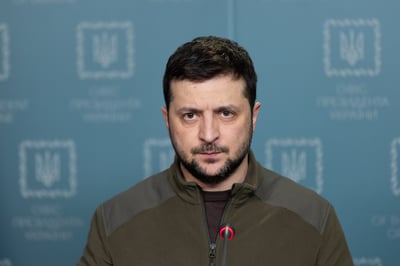 The video uploaded to a hacked Ukrainian news website shows how far the technology has come, how it can be used in social engineering, as well as how the tech still needs to improve.
The video uploaded to a hacked Ukrainian news website shows how far the technology has come, how it can be used in social engineering, as well as how the tech still needs to improve.
While much of the headlines today around the Russian invasion of Ukraine focus on the war on the ground and in the air, behind the scenes, a cyberwar is being waged. It began with wiper ransomware attacks on Ukrainian businesses and government agencies, and has culminated so far with a newly released deepfake video of Ukrainian president Zelenskyy asking his troops to lay down their weapons and surrender.
A deepfake of Ukrainian President Volodymyr Zelensky calling on his soldiers to lay down their weapons was reportedly uploaded to a hacked Ukrainian news website today, per @Shayan86 pic.twitter.com/tXLrYECGY4
— Mikael Thalen (@MikaelThalen) March 16, 2022
At face value, the deepfake looks pretty good, but if one is paying attention, it becomes obvious this isn’t the real president and the video can be seen for what it truly is. The use of cyberattacks – whether based on malware, social engineering, or both – is the new front lines of modern warfare. Yesterday, the White House even put out a statement about how both government and private sector businesses should harden their cyberdefenses immediately in light of possible cyberattacks from Russia.
And because the modern war is online, no business within a targeted country is safe – that’s not FUD; that’s fact. We’ve historically seen cyberattacks executed in both a random spray using millions of email addresses, as well as precision-targeted attacks on specific people within one organization – and everything in between.
The deepfake video also shows how cyberattackers will use the most credible and effective means to get targeted victims of an attack to take the desired action – whether it’s laying down a weapon, clicking a link, or opening at attachment; each one can have devastating results in their own right.
 Here's how it works:
Here's how it works:




